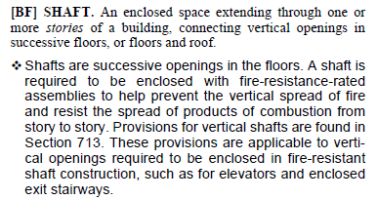Inspector Gadget
REGISTERED
Little discussion I want another opinion on.
Part 3 construction. Drain pipe for a sink goes through ONE side of a party wall.
3.1.9.4
3) Except as permitted by Sentences (4), (5), (7) and (8), combustible piping shall
not be used in a drain, waste and vent piping system if any part of that system
penetrates
a) a fire separation required to have a fire-resistance rating, or
Clause 5
5) Combustible drain, waste and vent piping is permitted on one side of a vertical
fire separation provided it is not located in a vertical service space.
So ... if I have a sink drain that penetrates one side of a party wall, does it require fire stopping or not?
Part 3 construction. Drain pipe for a sink goes through ONE side of a party wall.
3.1.9.4
3) Except as permitted by Sentences (4), (5), (7) and (8), combustible piping shall
not be used in a drain, waste and vent piping system if any part of that system
penetrates
a) a fire separation required to have a fire-resistance rating, or
Clause 5
5) Combustible drain, waste and vent piping is permitted on one side of a vertical
fire separation provided it is not located in a vertical service space.
So ... if I have a sink drain that penetrates one side of a party wall, does it require fire stopping or not?

